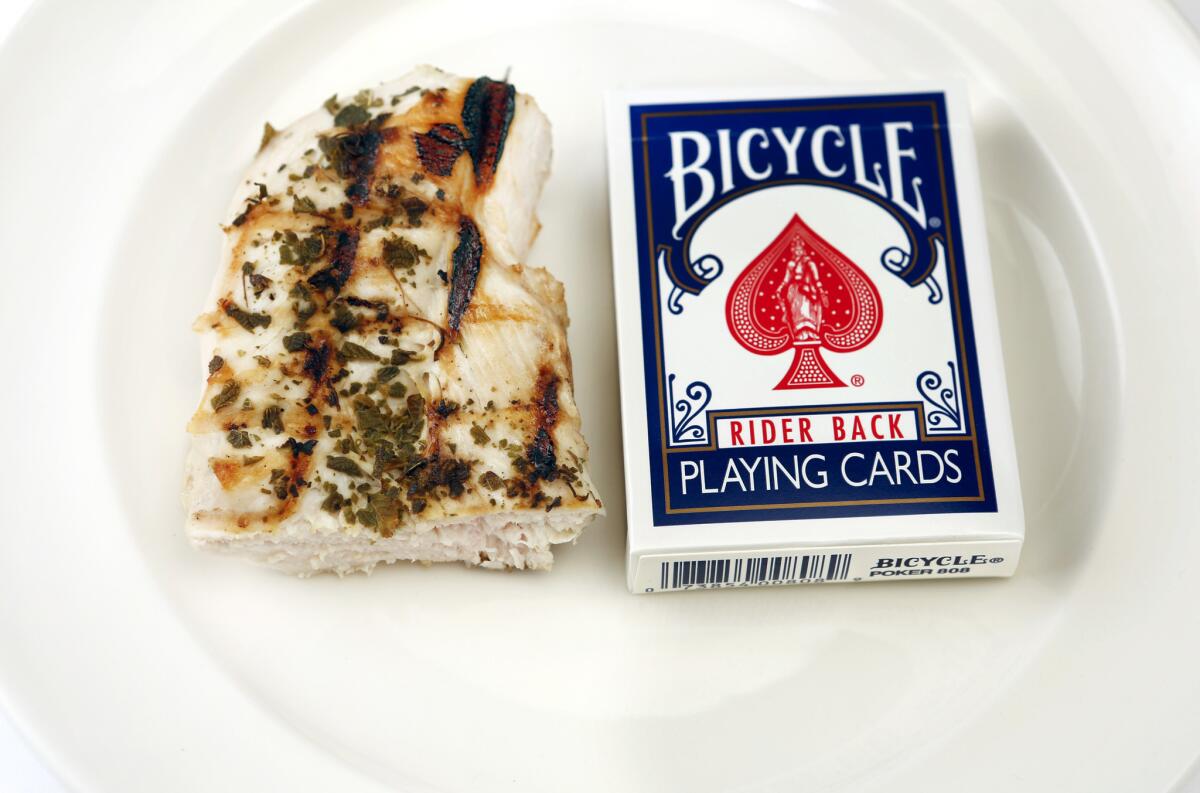Intermittent fasting, or IF, gains ground as a dieting tool

It’s a real heavyweight on the diet scene these days: intermittent fasting, a.k.a. IF (having ascended to heights where mere initials are enough). True, a fasting diet may not sound as appealing as, say, a cookie diet or a chocolate diet or a beer diet, but IF has been getting some jaw-droppingly good word of mouth from proponents who boast that it won’t just make you thinner, it will make you healthier too.
So far, evidence for their claims is promising but not overwhelming: Some of it is inconsistent, and much of it is anecdotal or rodent-based. So even though the IF bandwagon is getting pretty crowded, not everyone is ready to jump on board just yet. “I would say that the jury is still out,” says Susan B. Roberts, professor of nutrition at Tufts University and coauthor of “The ‘I’ Diet”. “Some good big studies are needed.”
What is IF?
Technically, we all fast intermittently already. We eat, and then we fast, and then we eat some more, and then we fast some more, etc. For many of us, of course, the results haven’t been all that fantabulous.
GRAPHIC: What does 600 calories a day look like?
Advocates of IF say we go awry by eating too much and fasting too little. (Surprise!) But while everyone seems to agree about that, there’s less consensus on exactly how much less we should be eating and how much more we should be fasting. In fact, in his e-book “Experiments With Intermittent Fasting,” nutrition counselor John Berardi cites a number of unsettled issues about IF: How often should you fast? How long should your fasts be? How strict should you be about them? Can you maybe eat a little? And what about when you’re not fasting? What should you eat then?
Various answers to these questions have been proposed, leading to a variety of IF plans. Berardi describes several: fasting 16 hours a day, fasting 20 hours a day, fasting all day once or twice a week, fasting all day every other day, skipping meals as the spirit (or your schedule or your stomach) moves you.
Perhaps the best-known version of IF is the one developed by Dr. Michael Mosley. In fact, the big buzz about IF might never have risen above a low drone were it not for this British physician and journalist who wrote about it in “The Fast Diet,” an international bestseller, and made a television special about it too.
The Fast Diet calls for eating as you usually do five days a week but eating just 600 calories the other two days. As an example of how wildly IF diets can proliferate, consider that this version has already spawned multiple versions (the 5:2 diet or the two-day diet). While these all call for two days of fasting and five days of non-fasting, they vary as to when the fasting days should happen (consecutively, non-consecutively, regularly, randomly) and what foods and how much of them you should eat on both fasting and non-fasting days.
Do you lose weight with IF?
One general principle holds in most, if not all, IF diets: There are certain periods when you eat nothing or at least much less than you would normally eat, and the rest of the time you eat what you normally eat or perhaps less. So, you do the math: You really should lose weight.
And there’s evidence that this actually happens. For example, a 2011 British study in the International Journal of Obesity compared two groups of overweight or obese women on diets in which their weekly caloric intake was 25% less than normal. In one group, the calorie restriction was an everyday thing. In the other group, calories were reduced by a whopping 75% on two consecutive days of the week, but the women could basically eat as usual on the other five days. After six months, researchers found that the two diets were equally effective for weight loss, with women in both groups losing about 13 pounds on average.
Of course, it’s easy to go off the rails on just about any diet, including an IF diet. It’s quite possible that the days when you eat nothing, or next to nothing, will leave you feeling so hungry (deprived, virtuous) that you’ll make up for lost eating time on the other days — and then some, perhaps.
Besides, says Roberts, speaking from experience with the 5:2 diet herself: “I don’t think many people can do it.... I can tell you that it is not easy. You get lethargic, hungry, really inward looking because your body absolutely knows it is in emergency conditions.... As a routine two-day-a-week thing, I think it would ruin your life.”
Of course, far from ruining his life, the 5:2 diet has been a big boon to Mosley, and not just because it led to a blockbuster book. He lost nearly 20 pounds on the diet and is now keeping it off with just one day a week of restricted eating. “When I first started, I found it quite difficult to do as I got distracted by occasional hunger pangs,” he says. “But I found, as many others have who have tried it, that these hunger pangs soon pass, and I had no problem sticking to the diet.”
Mosley came up with the 5:2 approach after finding longer and/or more frequent fasting too unpleasant and inconvenient. Berardi too has experimented with a variety of IF diets, finding some to his taste and others not so much.
For some people, an IF diet may actually be easier to stick with than other diets, says Dr. David Heber, director of the Risk Factor Obesity Program at UCLA. “It’s very clear what you’re doing each day. You know if you’re supposed to eat or not.” In fact, obese people may be particularly suited to IF, he says, “because often they don’t have normal hunger. Hunger isn’t what makes them eat, so fasting can be easier for them.”
In the 2011 British study, women didn’t comply with the IF diet any better than with the everyday diet, but they didn’t comply any less either, although only 58% of the IF group planned to stay on the diet after the study was over, while 85% of the other group did. The researchers note that the generally good compliance with both diets might derive, at least in part, from the fact that study participants were motivated to start out with, and during the study they were monitored and received encouraging calls.
Another British study, reported in the British Journal of Nutrition in 2013, did find more stick-to-it-ive-ness among IF dieters than among daily dieters.
There was no sign in either study that the IF diet led to over-indulgence on non-restricted-eating days. So fears that IF dieters might go hog wild when they have the chance may be exaggerated.
Will IF make you healthier?
A good deal of research suggests that IF may do your body more good than simply cutting it down a size or two. According to some studies, it may lower blood pressure, inflammation, triglycerides and bad cholesterol, as well as the risk of cancer. And it may speed up metabolism, fat burning and cellular replacement and repair. But results have not been consistent across studies, and in any case many of them have been done with rodents, so the results may or may not hold in humans.
Of the proposed benefits, many experts find IF’s effects on improved insulin sensitivity most convincing so far.
Dr. Valter Longo, director of the Longevity Institute at USC, has studied fasting for years and believes it’s a good step to take against many diseases of aging. “It’s like taking your car to a mechanic,” he says. “Your body gets a tune-up and then it can make a clean start.”
But tuning up your body takes more time than a tune-up takes at the garage, Longo maintains, and more time than the fasting periods prescribed by most IF diets. “You need four or five days before your body gets a restart.” So once or twice a year he does an extended semi-fast, allowing himself 600 to 800 calories a day for five days.
Not that Longo sees no use for IF. “A 5:2 diet is probably better than nothing,” he says. And, as a weight-control measure, he’s dedicated to his own version of an IF diet: skipping lunch most days, except, naturally, when he’s visiting his mother in Italy.
ALSO:
Spa treatments that go beyond pampering
Drilling down on the necessity of dental X-rays
A closer look at energy drinks with a natural kick






